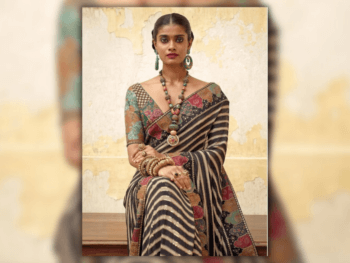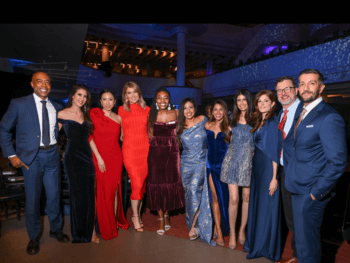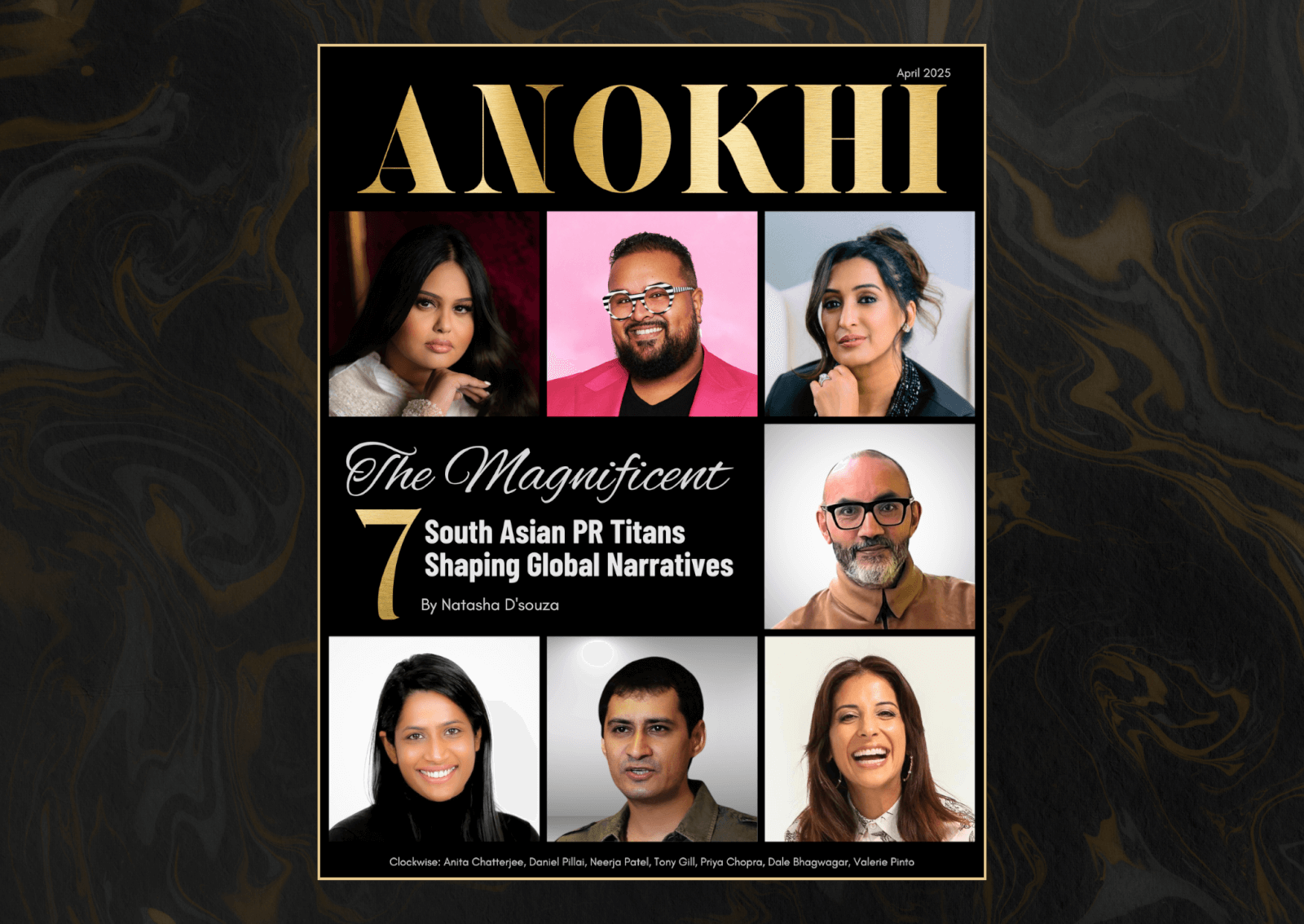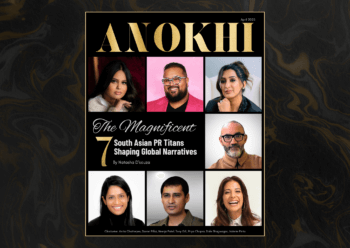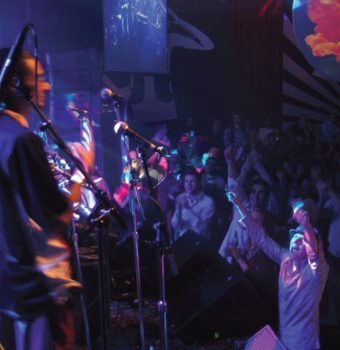
Now That’s Something to Snap About
Think jazz. Think Louis Armstrong, John Coltrane, Anita Baker. Think Asha Puthli, Sundar Viswanathan, Nandita Dias and Vijay Iyers. If you’re surprised by the latter four, you shouldn’t be but you’re probably not alone. South Asians in jazz – gasp! – is not a novelty; an evolution of sorts, yes, but by no means did this start overnight. And really, it shouldn’t come as a surprise at a time when South Asians are infiltrating all aspects of the arts. In this case, jazz is the common musical dialect.
“Jazz is less about style and more about in what ways you can improvise with style. And so, it’s very adaptable to different forms, different genres.”
– Graham Reid, executive director of Nu Jazz Society
So what’s there to say about South Asians in jazz?

“Drummer Max Roach studied tabla in the 50s, and some people say that Indian rhythmic ideas influenced Dave Brubeck’s Take Five. Most famously, John Coltrane had fruitful interactions with Ravi Shankar and others in the 60s. There’s nothing new about the exchange between South Asian cultures and the jazz world.” explains Vijay Iyer. Indeed. With India’s very own annual Jazz Utsav bringing together jazz aficionados from around the world, clearly there is something to snap about.
But why, then, do most people still seemed shocked at the notion of South Asians in jazz? And why are we hearing more about it now?
“I often get looks of confusion from aunties that I’ve just met and told that I’m a jazz musician!” says Sundar Viswanathan. Definitely far-removed from the stereotypical fields of medicine and engineering wished by all South Asian parents upon their kids, nevertheless Viswanathan explains, “I like to think this is changing because people are realizing that art is important to a sane, centred life…and the medium of word-less music can often say a lot more than we can with conventional language.” And furthermore, “…we’re just a reflection of the new demographics,” Iyer points out. And while South Asians in jazz is becoming the buzz today, there was a quiet crooning, as Iyer explained, long before.
“A sound like raga meeting Aretha Franklin…”
– The New York Times on Asha Puthli
Asha Puthli has been refreshing jazz lovers as a cosmopolitan pioneer of jazz, Bollywood, funk, soul and electronic dance music since the ’70s. Undefeated by an industry that rarely had a clue how to market a forward-thinking, boundary-breaking Indian singer, songwriter and producer, Puthli carved a niche for herself with her soft, slinky, sexy, meditative sound, making her biggest splash in Europe. Her unique sound garnered her the title “genius” by John Hammond, Columbia Records impresario, who sent her to record vocals on Ornette Coleman’s Science Fiction album, for which she won Downbeat magazine’s Critics’ Poll for Best Female Vocalist. What has since ensued is ten major label solo albums, along with a career coloured by collaborative recordings with the likes of Alice Coltrane, Roy Ayers, and Barry White, to name but a few. Despite a resounding career, when Puthli returned to the U.S. concert stage in 2006 after 25 years, she reflected back to a time when, “…record labels did not see a place for an Indian woman expressing herself musically, singing in English and incorporating her cultural traditions in the western context.” Clearly, times have changed.

“…The New York scene felt very entrenched, and people seemed very obedient to stylistic categories. It’s changed quite a bit since then, becoming more creative and open – I think my collaborators and I have taken part in the cycle of change.”
– Vijay Iyer on New York’s jazz scene in the early 90s
Having started out professionally in the Oakland/San Francisco Bay area, Vijay Iyer experimented with his music, developing his voice and gaining a community of collaborators. When he moved to New York at the end of the ’90s, Vijay tells, “I could sort of make a small splash with this music that was a little different from whatever else was on people’s radar.” Having collaborated with saxophonist Steve Coleman, African-American poet and activist, Amiri Baraka, and world-renowned Carnatic percussionist Trichy Sankaran, amongst other artists, Iyer’s career thus far has been sprinkled with meaningful collaborations. “The way I create music is usually by trying something I’ve never done before and listening to what happens,” Iyer says, “I just bring my overall musical sensibility to whatever situation I’m in. That has to do with having a composerly sensibility, pianistic abilities, and a knowledge of the music’s history.” His most recent collaboration – which he considers to be one of his most fruitful – was with poet Mike Ladd on their recent album Still Life with Commentator. Inspired by the Abu Ghraib scandal at a time when the blogsphere and other personalized media were exploding, the album was created in an effort to portray the emotional landscape of these new narrative forms. “Music needs to tell a certain kind of story about where it came from and how it got here.” And as Iyer strives and achieves that with his own music, he feels he is still just entering the jazz scene.

“Jazz represents freedom of expression through sound. But if you want [to know] what jazz is as an art form, to me, it’s such an evolving genre that it can incorporate whatever other style it meets and become something new, without losing its source of rhythm and spirit.”
– Sundar Viswanathan
“You know, the first time I heard the record Charlie Parker with Strings, I knew I had to learn how to do what Bird was doing on that record,” Sundar Viswanathan reflects. Ironically, the improvising nature of jazz was a stretch from Viswanathan’s major in classical music and composing at the time, but that wasn’t the case for long; jazz took Viswanathan touring through Europe, Japan, South Africa and the United States – but unfortunately not as much through home – Canada. Viswanathtan feels that of the South Asian artists he knows and has played/fused with – Renee Rosnes, Rez Abbasi, Rudresh Mahanthappa – many live in the United States. Only recently has Viswanathan begun to feel that he’s getting some recognition in Canada: “I think I’m bringing a new sound into the jazz scene, with my composing and playing. Sometimes new things take time to be recognized and I feel like it has been happening a lot more lately.”
A professor in York University’s music department, Viswanathan feels that artists learn about themselves the more they play and study their instrument. “Maybe it has something to do with the meditative mindset that musicians have to adopt in order to go where they want to musically,” Viswanathan suggests. Feeling like he’s constantly searching for the “perfect” melody, the journey involves dynamic and beautiful melodies along the way, drawn from eclectic cultures, including Brazilian, Turkish, South African, Cuban, and Tibetan (throat-singing). And mood is extremely important to him when creating music. “There might be a particular raga from Carnatic or Hindustani music that has a mood associated with it that I’m trying to capture for a tune…often it’s a process that has been internalized to a degree, and that becomes intuitive,” he says. Most recently Viswanathan completed the album, Sundar’s Induswest Project, which dedicates the first three tracks to the victims and families of the Air India tragedy. “Nearly all the other songs have some connection to the idea of hope, or the concept of infinity. I tried to get at that sense that there is always light, even a pinprick of light, in what might seem like utter darkness,” he explains.
“At the age of 17, I sang Peggy Lee’s ‘Fever’ at my high school’s talent show. The following week, the music teacher took me to the school auditorium where the jazz band held its rehearsal.”
– Nandita Dias
 At the age of 23, it may be assumed that one could only just be starting a career – of any sort – however, Nandita Dias has a voice beyond her years, and she “caught the fever,” reminisces Dias, when she was a teenager. With a unique tie to the Latin American culture as well, Dias’ sound is an intriguing blend of Spanish, Portuguese and Indian; however, she confides, “What makes me anokhi is my indo-jazz original material in which I sing a Hindi composition that retains the ethos of the jazz standard…so my music is decidedly Indian.” Dias co-writes many of her songs with dad, Franky Dias, who does the Hindi lyrics, “and it works well because nothing is lost in translation” says the Indo-Canadian. Dias modestly describes her music as unique, fresh, lyrical and passionate. She hopes her upcoming first album will truly reflect her artistic versatility. Her versatile reality is the life of a recent University of Toronto graduate-to-be-teacher and when she’s not “working” the young artist is still singing in India, Costa Rica, Italy and Harlem. Wherever her traveller’s heart takes her, the music follows.
At the age of 23, it may be assumed that one could only just be starting a career – of any sort – however, Nandita Dias has a voice beyond her years, and she “caught the fever,” reminisces Dias, when she was a teenager. With a unique tie to the Latin American culture as well, Dias’ sound is an intriguing blend of Spanish, Portuguese and Indian; however, she confides, “What makes me anokhi is my indo-jazz original material in which I sing a Hindi composition that retains the ethos of the jazz standard…so my music is decidedly Indian.” Dias co-writes many of her songs with dad, Franky Dias, who does the Hindi lyrics, “and it works well because nothing is lost in translation” says the Indo-Canadian. Dias modestly describes her music as unique, fresh, lyrical and passionate. She hopes her upcoming first album will truly reflect her artistic versatility. Her versatile reality is the life of a recent University of Toronto graduate-to-be-teacher and when she’s not “working” the young artist is still singing in India, Costa Rica, Italy and Harlem. Wherever her traveller’s heart takes her, the music follows.
“Jazz by Genre is based on building bridges between the improvisational essence of jazz and various styles of music from around the world.”
– Graham Reid, executive director of Nu Jazz Society
While at first quietly, yet always persistently, and now more than ever, South Asians in jazz are making some noise. And it’s not just South Asians that are creating and fusing within this musical genre. Jazz by Genre, both a concept and a live event series produced by Nu Jazz Society, showcases jazz through a range of both popular and traditional music styles, in an effort to connect culturally-, musicallyand generationally-diverse audiences. Transcending the idea of a festival or a jazz series, “It is really a new way to consume jazz…our principle mandate is to understand the range and the reach of jazz music,” explains Graham Reid, executive director of Nu Jazz Society. By offering a unique way for people to embrace and connect with jazz, Jazz by Genre is inviting new and old jazz-lovers alike to embrace the evolving face of jazz music. Reid sums up by saying, “The future for jazz is extremely dynamic, very vibrant and certainly – if we have anything to do with it – very cross-cultural and generational.”
WORDS JAYANI PERERA
For more information on the artists and their upcoming events, and Jazz by Genre’s upcoming festival, please visit these websites:
sundarmusic.com
ashaputhli.com
vijay-iyer.com
nanditadias.com
jazzbygenre.com



















































